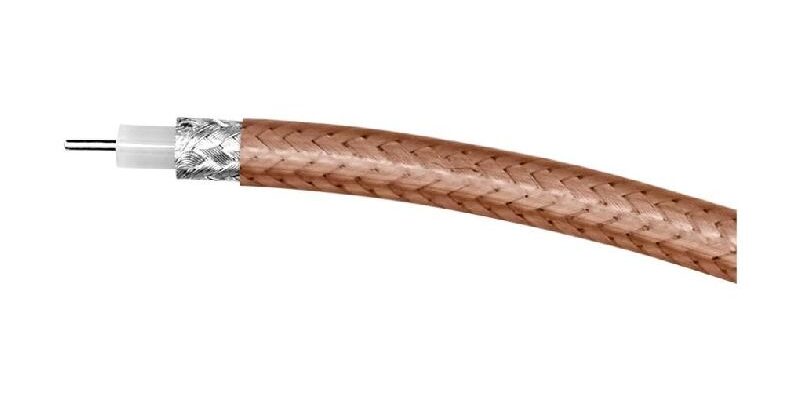
In today’s technologically advanced world, the demand for high-performance cables is greater than ever. Whether you’re in telecommunications, broadcasting, or even military applications, having the right cable is crucial to ensuring the integrity of your operations. Among the many options available, hlf cable stands out as a top choice for professionals who need reliable, low-loss transmission lines. In this article, we will explore what HLF cables are, their key features, applications, and how to choose the right HLF cable manufacturer.
What is HLF Cable?
HLF cable is a type of coaxial cable known for its low-loss transmission capabilities. Coaxial cables, commonly used in various communication systems, consist of a central conductor, insulating layer, shielding, and an outer protective jacket. The design of HLF cables ensures that they can transmit signals with minimal attenuation, making them ideal for high-frequency applications where signal integrity is critical.
The HLF 400 cable is one of the most popular models in this category. It is renowned for its excellent performance in terms of signal loss and durability. The HLF 400 cable is particularly well-suited for applications that require high-frequency transmissions, such as wireless communication systems, broadcasting, and military operations.
Key Features of HLF Cable
1. Low Signal Loss (Attenuation)
One of the standout features of HLF cable is its low signal loss or attenuation. Attenuation refers to the reduction in signal strength as it travels through the cable. The lower the attenuation, the better the cable is at preserving the signal over long distances. The HLF 400 cable is specifically engineered to minimize attenuation, making it a preferred choice for applications where maintaining signal strength is crucial.
2. High-Frequency Handling
HLF cables are designed to perform exceptionally well at high frequencies, which is why they are often used in telecommunications and broadcasting. The HLF 400 can handle frequencies up to several gigahertz, making it suitable for a wide range of applications, including cellular networks, satellite communication, and even certain military applications.
3. Durability and Environmental Resistance
Durability is another major advantage of HLF cable. These cables are built to withstand harsh environmental conditions, including exposure to UV rays, extreme temperatures, and moisture. The HLF 400 cable is particularly durable, with an outer jacket made from weather-resistant materials that protect the internal components from damage, ensuring long-term reliability in both indoor and outdoor installations.
4. Superior Shielding
HLF cables come with high-quality shielding to protect against electromagnetic interference (EMI). EMI can cause significant signal degradation, especially in environments with many electronic devices. The superior shielding of the HLF 400 cable helps maintain the integrity of the transmitted signals, ensuring clear and uninterrupted communication.
Applications of HLF Cable
Given its excellent performance characteristics, HLF cable is used in a wide variety of applications across different industries. Here are some of the key areas where these cables are indispensable:
1. Telecommunications
In the telecommunications sector, maintaining high-quality signal transmission is essential. HLF cable is widely used to connect antennas to transmitters and receivers in cellular networks, ensuring that signals are transmitted with minimal loss. The HLF 400 cable is especially popular in this industry due to its ability to handle high-frequency signals efficiently and with minimal attenuation.
2. Broadcasting
Broadcasting, whether it’s radio, television, or satellite, requires cables that can transmit audio and video signals clearly and reliably. The low attenuation and high-frequency capabilities of HLF cable make it an ideal choice for these applications. Broadcasters rely on HLF 400 cable to deliver high-quality signals to their audiences without interruption.
3. Military and Aerospace
In military and aerospace applications, reliability and performance are non-negotiable. HLF cable is used in various systems, including radar, communication equipment, and navigation systems. The HLF 400 cable is favored in these fields due to its durability, low signal loss, and ability to perform under extreme conditions, making it an excellent choice for critical applications.
4. Wireless Communication
Wireless communication systems, such as Wi-Fi and cellular networks, require cables that can handle high frequencies and maintain signal integrity over long distances. HLF cable is often used to connect antennas in these systems, ensuring that the signals remain strong and clear. The HLF 400 cable is particularly well-suited for these applications, thanks to its low attenuation and high-frequency performance.
Choosing the Right HLF Cable Manufacturer
Selecting the right HLF cable manufacturer is crucial to ensuring that you get a product that meets your specific needs. With many manufacturers offering HLF cables, it’s important to consider several factors to make the right choice:
1. Quality Assurance and Certifications
Quality is the most important factor when choosing a HLF cable manufacturer. Look for manufacturers that adhere to industry standards and have the necessary certifications, such as ISO 9001. These certifications indicate that the manufacturer is committed to producing high-quality products. Ensure that the HLF 400 cable you purchase is reliable and meets the specifications required for your application.
2. Experience and Expertise
Experience matters in the cable manufacturing industry. Manufacturers with a long history and expertise in producing coaxial cables, particularly HLF cables, are more likely to deliver reliable products. An experienced manufacturer will have a deep understanding of the specific requirements of different industries, ensuring that their cables perform optimally in various applications.
3. Customization Options
Depending on your specific needs, you may require customized cables. Some manufacturers offer customization options, such as different jacket materials, lengths, and connectors. If your application requires specific cable characteristics, choose a HLF cable manufacturer that can provide customized solutions tailored to your needs.
4. Customer Support and Service
Good customer support is essential, especially if you encounter issues with the cable. Choose a manufacturer that offers excellent customer service, including technical support and assistance with installation. A responsive and knowledgeable customer support team can help you resolve any issues quickly, ensuring that your operations run smoothly.
Installation and Maintenance Tips for HLF Cable
Proper installation and maintenance are key to ensuring the longevity and optimal performance of HLF cable. Here are some tips to help you get the most out of your cables:
1. Follow Manufacturer Guidelines
Always follow the installation guidelines provided by the HLF cable manufacturer. This includes using the correct connectors, ensuring proper grounding, and avoiding sharp bends in the cable. Proper installation ensures that the cable performs as intended and minimizes the risk of damage.
2. Regular Inspections
Regularly inspect your HLF cables for signs of wear and tear, especially if they are installed in harsh environments. Look for any damage to the outer jacket, as this can compromise the cable’s performance. Regular inspections can help you identify potential issues before they lead to signal degradation.
3. Proper Storage
If you need to store HLF cables, make sure they are kept in a cool, dry place away from direct sunlight. Proper storage helps maintain the integrity of the cables and extends their lifespan, ensuring that they are ready for use when needed.
4. Cleaning and Maintenance
Keep your HLF cables clean and free from dirt and debris. If the cables are installed outdoors, ensure that they are protected from the elements as much as possible. Regular cleaning and maintenance help prevent issues like corrosion, which can affect signal quality.
Conclusion
HLF cable, especially the HLF 400 cable, is an essential component in many high-frequency applications, from telecommunications to broadcasting and military systems. Its low attenuation, durability, and high-frequency performance make it a preferred choice for professionals in these fields. When choosing a HLF cable manufacturer, consider factors such as quality, experience, customization options, and customer support to ensure that you get a product that meets your specific needs.
By understanding the features, applications, and best practices for installing and maintaining HLF cables, you can ensure optimal performance and longevity of your communication systems. Investing in high-quality HLF cables and choosing the right manufacturer will lead to better signal quality, reduced downtime, and more reliable communication systems, ultimately contributing to the success of your operations.










